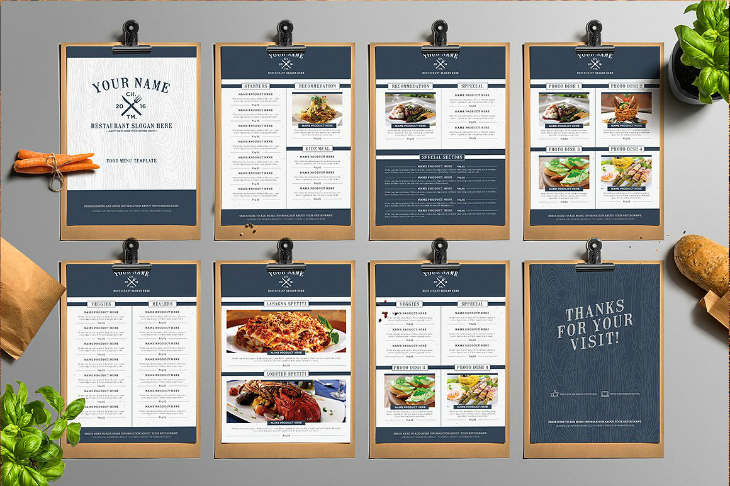Seasoned restaurateurs—individuals who own and operate a restaurant—will tell you that one of the often neglected aspect of running this business is menu card design. Restaurant owners tend to focus more on meal preparation, ambiance setting, and other business aspects. There is nothing wrong with giving more importance on those areas of the business since they belong to core business processes. However, ample attention should still be given toward the design and development of restaurant menu cards.
Restaurant menu cards serve a variety of purpose aside from being a physical list of the things that your establishment offers. As a restaurant owner, you need to be aware of these purposes so that you can help grow your business. And if you are just thinking of starting a business in the dining niche soon, it is best to take note of the different tips we have included in this article that will help propel your restaurant start-up to new heights.
Why Use Menu Cards
- It lists all offered dishes and beverages. As mentioned earlier, menu cards are used to list all the dishes, meals, and beverages that a dining joint offers. Menu cards help both restaurant workers and customers to have an idea of what they can offer and what they can eat respectively. Employees, especially servers and wait staff, are not pressured to memorize a restaurant’s dishes; and if they need to, the menu cards can aid them when memorizing items on the list.
- First impression to customers. Food menu cards have become a restaurant’s first line of communication with its customer base. And to ensure that this exchange sails smoothly, restaurant owners should make sure to create the best menu card design that they could possibly develop. A thoughtfully designed menu card goes a long way.
- It serves as a marketing tool. Menu cards are the first thing that customers see and read after they get settled down at a restaurant. And in an Instagram-savvy world, diners may snap photos of your menu cards and share it with the rest of the world. Your restaurant may also take a proactive step in generating copies of your menu cards and distribute them as flyers. Both of these techniques are practiced by most franchised restaurants as a marketing tool. There is no reason why family-owned restaurants should not follow this approach. After all, the digital age has brought down the barriers to marketing your own restaurant business that was uncommon just a decade ago.
- It reinforces your brand’s image. Any kind of business has a brand image whether they want to have one or not. If you want your business to succeed, you should help create and shape this image toward a positive regard for your brand. When you have aptly constructed restaurant menu designs, your business’s image is strengthened. Customers get to see (and hopefully also experience) that there is unity in the team working on this specific restaurant.
Different Types of Restaurant Menu Card
Menu cards come in different forms. It is best to follow menu card design formats that will suit your brand’s image best. To illustrate, if your restaurant business wishes to connect with more fine dining customers, it may be best for you to follow a formal menu card design. Distinguishing features like brand icons, color schemes, font styles, and menu options may differ but the basic structure of restaurant menu card designs will adhere to any of the following types:
- Chalkboard Design. Chalkboards were first used in family-owned restaurants as a way to create menus that can be modified easily as the restaurant changes meal offerings throughout the day. In the recent years, restaurant and coffee franchises developed and recreated chalkboard menu designs into the trend that we see today. Chalkboard designs basically show menu cards written in chalk. This is accomplished by hiring artists who specialize in chalkboard signage and/or by using chalkboard font styles on a document and printing them out. Restaurants that want to create a cozy and trendy vibe will benefit with using a menu card with chalkboard designs. This type of design is commonly seen in cafe menu designs.
- Tri-Fold Design. Tri-fold menu card designs show a unique way of presenting a menu catalog without cramming all menu options into a single page. This type of menu card design is often used to separate different meal course options—altogether organizing the entire menu offerings while saving print space. For example, a page may be dedicated to beverages while another page is dedicated to different meat dishes.
- Single-Page Design. Single-page restaurant menu card designs are often used by businesses who want to present all their food choices at a glance. This simplifies the menu selection process and is also very useful when the restaurant wants to increase customer turnover rate. Single-page menu cards are also effective when creating kiddie food menu cards since kids will not have to fuss over different pages of a menu card.
- Design with Pictures. Using pictures in menu card designs constitutes another type of menu card design. Images of the food or meals that a restaurant serves give customers a visual representation of they are getting. It also lets the customer gauge if he or she will like the food.
When creating menu card designs, you are not limited to using only a single type of menu design. Generally, menu cards become more effective when they combine all design techniques. To illustrate, restaurants that use restaurant chalkboard menu card designs in highlighting menu options and in illustrating menu options exude a feeling of coziness and has a better appeal to different audience groups.
Tips for Creating Menu Card Designs That Stand Out
Creating restaurant menus does not stop with choosing the type of menu design to use. Restaurant owners should also look into the details of each menu card that they create. Here are a few things that should be done well in order to create menu cards that can translate to sales.
- Invest in a unique set of font styles that will best represent your business’s image. Designing restaurant menu cards is all about presentation. There should be unity in a menu’s design in terms of the font styles, typography, pictures, etc., that are included in a menu. For instance, using the same type of cursive font style on menu cards and on any company business cards and letterheads will help unify the brand.
- Stage food shots well. Staging does not only apply to real estate photography. It can also be used in taking pictures of food and meals that a restaurant offers. Incorporating images into a restaurant’s menu design will help entice customers in choosing which dish or dishes to try out. Just make sure that your food photography remains consistent to what the dish looks like in the real life.
- Minimize showing the currency logos and signs in your menu card. It has been found by numerous studies and online split testing that consumers tend to become conscious of pricing more when currency signs are shown in a page selling something (whether online or in paper form).
- Always show your restaurant’s logo or emblem on the menu pages. Including a company’s official logo on a menu card gives the menu some credibility. It also illustrates internal company cohesion and most consumers see this as a good thing.
- Add healthy menu options. Restaurants benefit when their customer base increases. One way to do this is to offer different menu options for those on different kinds of diets. It also helps that a restaurant offers other healthier versions of a specific meal or dish. For instance, you can include separate vegetarian restaurant menu card designs for clients who adhere to a different diet.
- Update your menu as needed. If customer satisfaction is one of your restaurant’s aim, you should make sure that your menu cards are updated regularly. Restaurant managers do not have to scrap old menu cards and create new ones. You can simply place “Not Available” stickers on the menu items that the restaurant no longer offers or are temporarily unavailable. This sets proper expectations to your customers and they will not feel bad about not being able to order something that is shown on a menu card.
- Follow a menu card theme that matches your restaurant’s theme. Restaurant menu card design should work hand in hand with restaurant theme selection. For example, if want to create an 80s style burger joint, you should incorporate 80s vintage menu designs in making your menu cards. Again, this helps unify your restaurant’s branding. It also serves as a tool for promoting your restaurant.
Menu Board Template

Restaurant Menu Card Template

Simple Menu Card Template
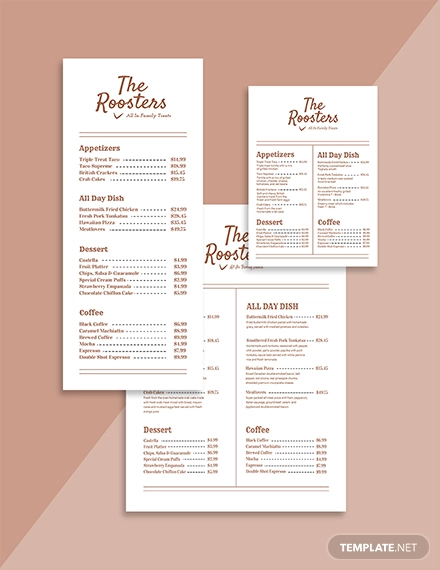
Restaurant Menu Card
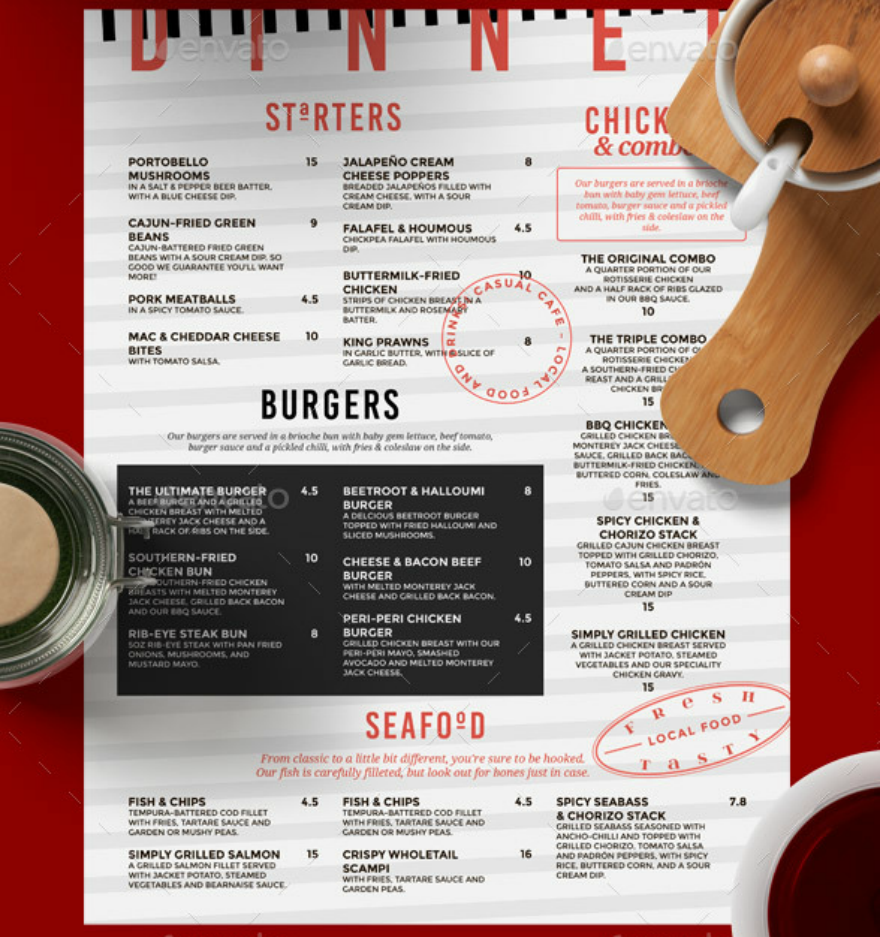
Printable Restaurant Menu Card Design
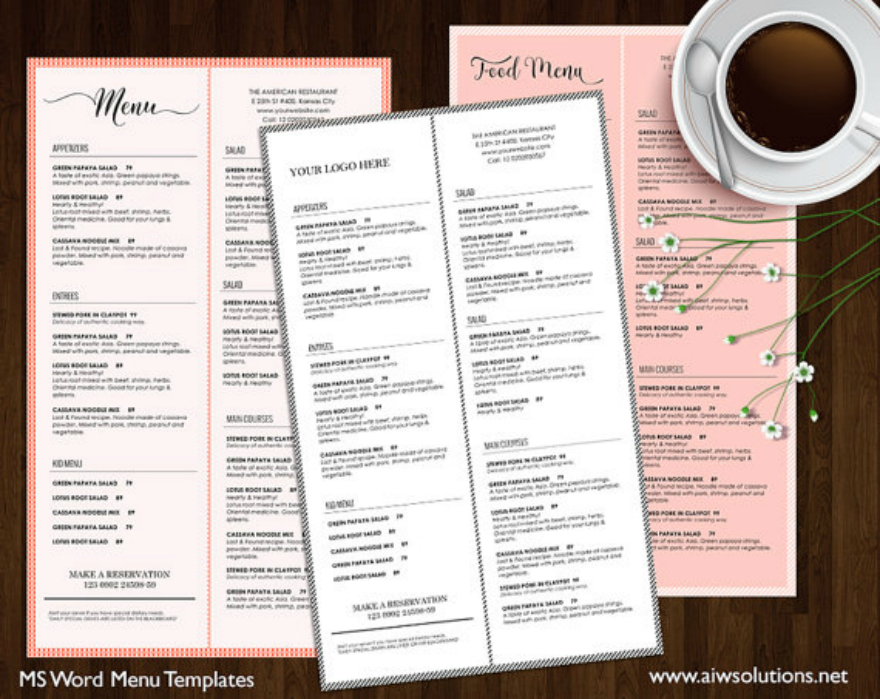
Burger Restaurant Menu Card Design

Dinner Minimalist Menu Card Design

Seafood Restaurant Menu Card Design
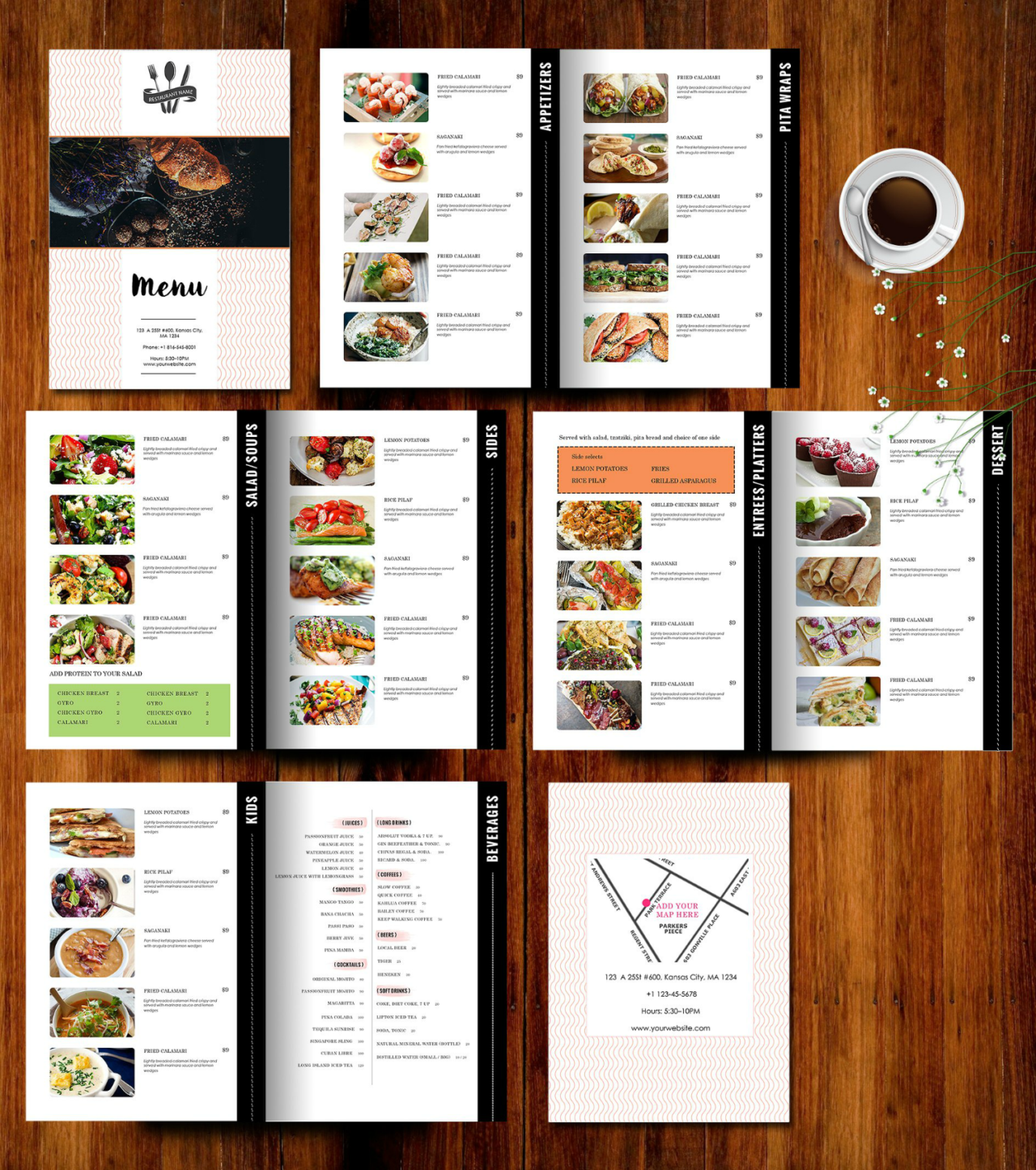
Breakfast and Dessert Restaurant Menu Card Design

Salad Bar Retro Menu Card Design
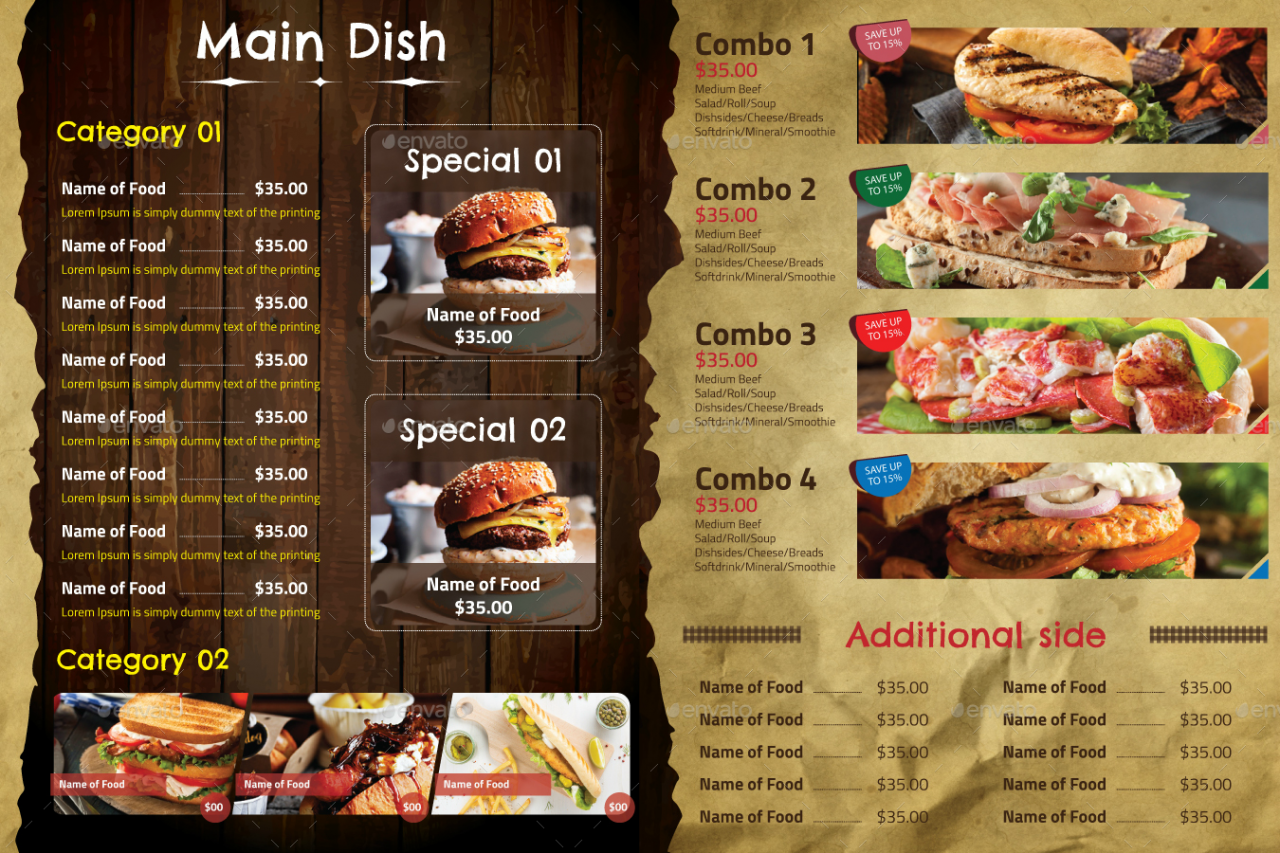
Family Restaurant Menu Card Design

Caterer Restaurant Menu Card Design

Classy Restaurant Menu Design
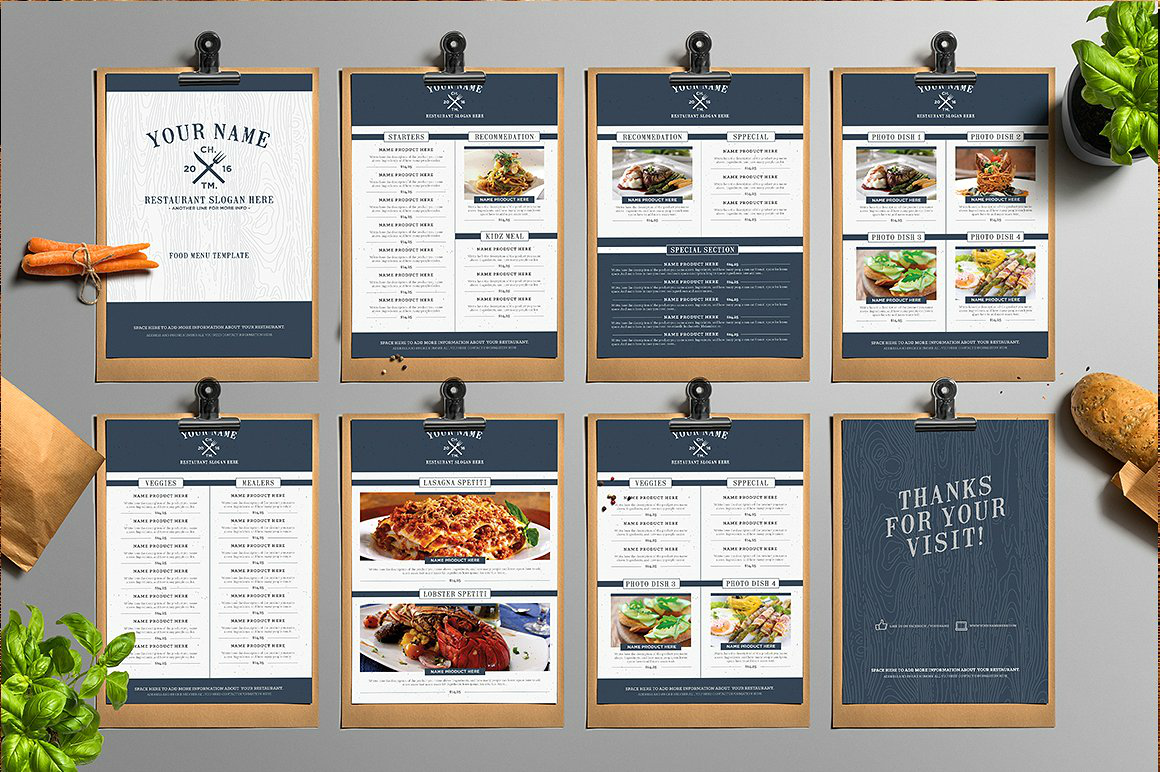
What Restaurant Menu Card Design to Choose
The different menu card design samples embedded above range from the clutter-free minimalist menu designs to the attention-grabbing modern menu card designs. Perhaps the most important factor to consider when deciding what menu card design to follow is to determine if a design type wholly connects with your restaurant’s theme and image. Incongruence between these two things will lead to a brand identity crisis.
And this is something any business owner does not want. Businesses, especially restaurants, needs to differentiate themselves from other restaurants in their niche. One of the most effective way to do that is by crafting an impeccable brand image and plastering it all over your business premises, online presence, and of course, your restaurant’s menu card designs.
Related Posts
7+ Food Menu Designs
8+ Kid’s Food Menu Designs
49+ Printable Christmas Template Designs – PSD, AI, Word
15+ Christmas Party Invitations
Key Elements of Brand Identity Design
Top Trending Designs for Typography in 2023
7 Blog Design Trends Dominating 2023
How to Create Appealing Instagram Stories that Grab Attention
Advertisement Design Trends 2023
Best Designs for Album Covers 2023
12+ Best Web Designs for 2023 – Word, PSD, AI, EPS Vector
Top Best Font Style that Can Be Used in 2023
Best Digital Design Trends of 2023
Magazine Design Trends 2023
Top UX Design Trends 2023
